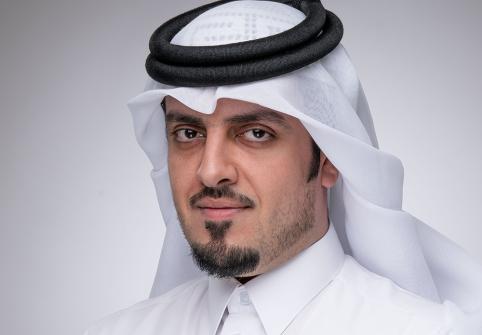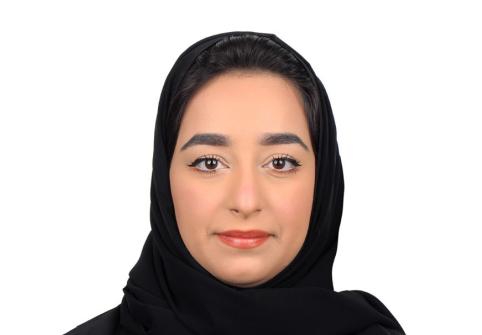Innovation How are Robots Helping Qatar Tackle COVID-19?
By Dr. Bo Wang, Dr. David Yin Yang and Ali Al-Rashid
From disinfecting public spaces to helping enforce social distancing rules, and much more, robots play an important role in global efforts to confront COVID-19. In this question and answer feature, faculty members and students from the College of Science and Engineering (CSE) at Hamad Bin Khalifa University (HBKU) outline how Qatar has made use of these technologies.
In which sectors has Qatar been using robots to tackle COVID-19?
In keeping with other parts of the world, Qatar is also using robots to limit and tackle the spread of COVID-19. For instance, Hamad International Airport has deployed robots with short-wavelength ultraviolet light for disinfection purposes. Elsewhere, the Ministry of Interior (MoI) uses devices with surveillance cameras to patrol areas where managing infection rates is high-priority, for example, Doha’s Industrial Area. Turning to healthcare, Hamad Medical Corporation relies on robots to ensure patients comply with social distancing rules.
What types of platforms and/or technologies have been used? Are any of these homegrown?
The main technologies involved are unmanned navigation, vision systems, remote control, and image and video processing. These technologies are mature and widely used in such areas as industrial automation. As far as we know, many of the robots deployed in Qatar are from global manufacturers while customizations have been made to adapt to the local environment and application scenarios. For example, domestically-produced image/video processing algorithms have been applied to MoI robots tracking public gatherings.
To what extent have social, cultural, and environmental factors limited Qatar’s use of robots to tackle COVID-19?
Using robots to tackle a health emergency is as new for Qatar as it is for many other countries around the world. Both the public and private sector are still working out how to make the best use of these platforms. For example, there were not that many disinfection robots in operation prior to COVID-19. In response, companies and university labs are redoubling their efforts to meet demand.
Because of Qatar’s tropical desert climate, the application of robots in outdoor scenarios is limited to only a few places, such as the desert, beaches, and souqs. These robots are mainly used to reduce person-to-person encounters between police personnel and violators. For indoor applications, robots are mainly used for disinfection, as well as patient examinations in hospitals. Qatar was undoubtedly slow off the mark to deploy disinfection robots in its shopping malls; however, the recent development of a fast UV-C disinfection robot should help to redress the balance.
The State of Qatar is gradually bringing the country out of lockdown. Do you anticipate a gradual increase in the use of robots to assist in this process?
Once lockdown has been lifted, we anticipate even more robots will be deployed in crowded areas like hospitals, schools, malls, and praying areas, mainly for disinfection purposes. Manual disinfection will still have a role to play but requires long working hours and must be undertaken at least daily. As evidence that COVID-19 is airborne grows, hourly disinfection will most likely be required in these busy areas. Moreover, as this pandemic is expected to last longer than anticipated, the adoption of robots is financially more efficient and more robust if controlled well.
How are local universities such as HBKU contributing to Qatar’s use of robots to combat COVID-19?
The use of robots to combat a pandemic is new and most of the application scenarios are ad hoc and have different hardware as well as algorithm requirements. Currently, CSE researchers are customizing a robot to perform both spraying as well as UV-C disinfection for indoor and outdoor applications. We also plan to improve the vision modules of the robot, such as adding thermal and depth cameras to automatically detect people with fever, as well as crowds of people violating social distancing rules. Apart from COVID-19, other Artificial Intelligence (AI) technologies developed by CSE could also be applied to robots. For example, robots could be used to scan a person’s skin to detect suspicious lesions that might be caused by skin cancer. Robots might also analyze a child’s drawings to determine their psychological state and to detect potential depression.
Will the use of robots to tackle COVID-19 renew interest in Qatar’s ability to develop these technologies, especially when it comes to fulfilling Qatar National Vision 2030?
Even before COVID-19, Qatar had ambitious robotics learning and development initiatives, such as the National Robot Olympiad program. For its part, CSE’s winter camp has a robotics session that trains local students in this area. Robots will also play an important role at the FIFA World Cup 2022TM, in some instances acting as assistant referees.
We do not expect Qatar to develop all technologies related to robotics as it involves too many manufacturers and it is not economically efficient to relocate all of them to the country. Because Qatar invests a lot in digital technologies such as AI, robots are an excellent platform to implement these technologies to encourage smart homecare, automated warehouses, and even more innovative agriculture in the future.
With advances in AI technologies, a new generation of robots can increasingly interact with people. For example, a robot with cutting edge AI can already detect whether a person is paying attention to it, recognize American Sign Language, and have meaningful short conversations with people. Such robots can be used in hospitals and nursing homes as well as hotels and sports stadiums. With this, robots can make a significant contribution to economic growth, social development and other objectives set out in Qatar National Vision 2030.
Dr. Bo Wang is an assistant professor of ICT at the College of Science and Engineering at Hamad Bin Khalifa University.
Dr. David Yin Yang is an associate professor of ICT at the College of Science and Engineering at Hamad Bin Khalifa University.
Ali Al-Rashid is a PhD student at the College of Science and Engineering at Hamad Bin Khalifa University.







